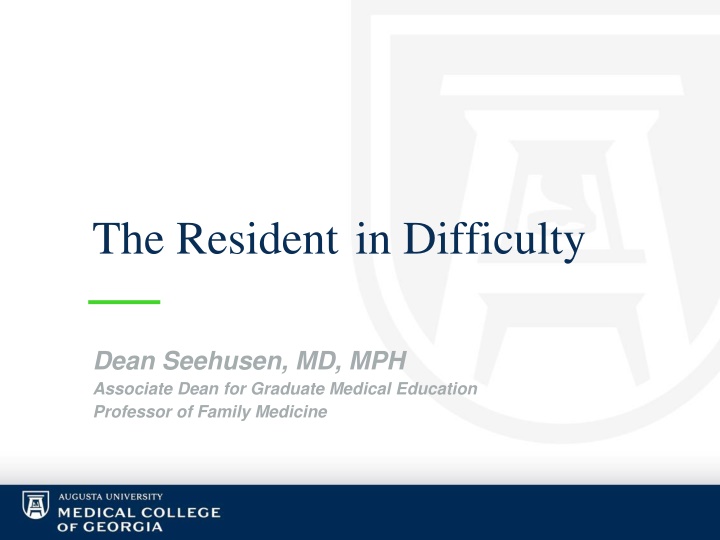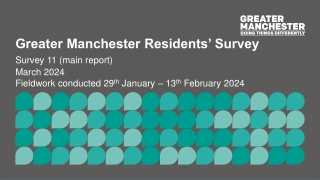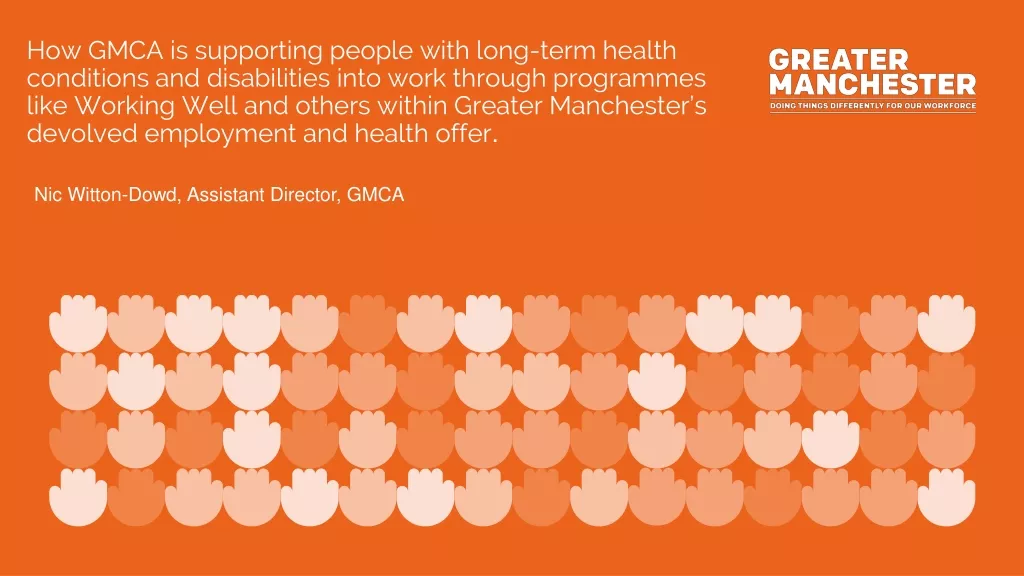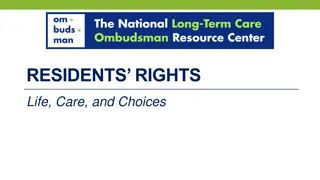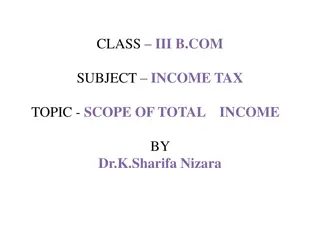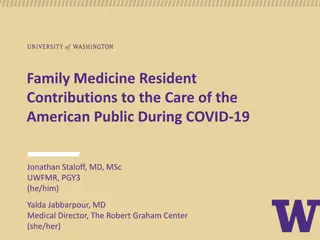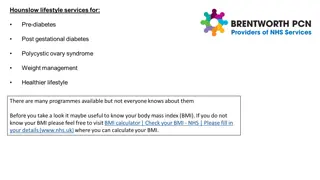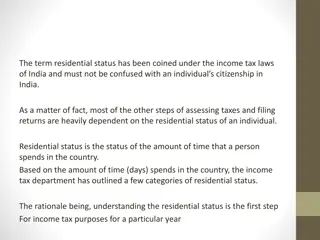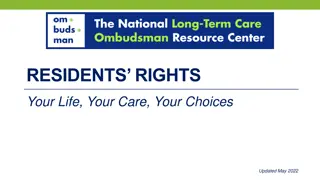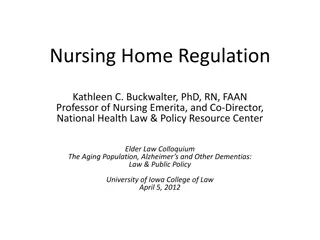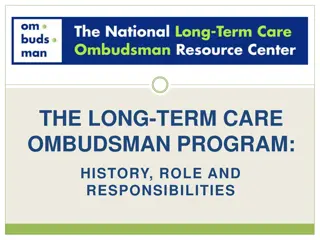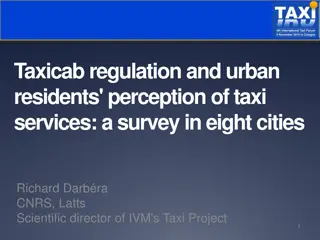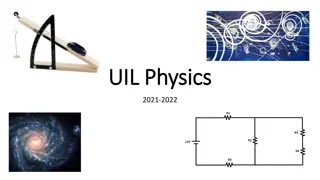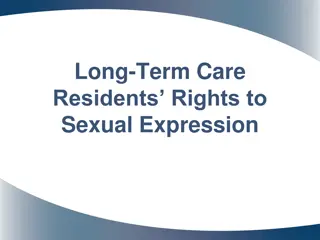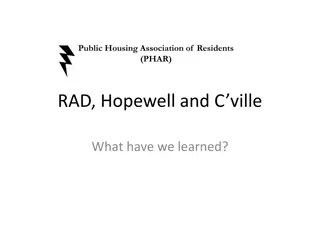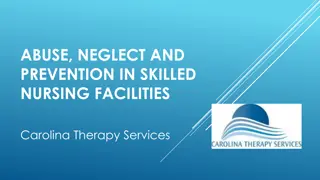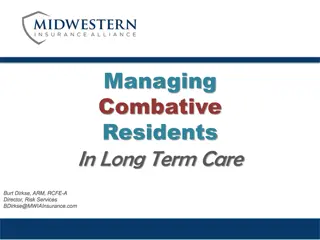Managing Residents in Difficulty: Tools and Strategies
This session covers essential information on identifying and managing residents facing difficulties in their training. Explore assessment tools, diagnostic taxonomy, remediation objectives, and legal considerations. Gain insights from incidence and prevalence studies, real-life case examples, and the SOAP framework. Equip yourself with the knowledge to support struggling residents effectively.
Download Presentation

Please find below an Image/Link to download the presentation.
The content on the website is provided AS IS for your information and personal use only. It may not be sold, licensed, or shared on other websites without obtaining consent from the author.If you encounter any issues during the download, it is possible that the publisher has removed the file from their server.
You are allowed to download the files provided on this website for personal or commercial use, subject to the condition that they are used lawfully. All files are the property of their respective owners.
The content on the website is provided AS IS for your information and personal use only. It may not be sold, licensed, or shared on other websites without obtaining consent from the author.
E N D
Presentation Transcript
The Resident in Difficulty Dean Seehusen, MD, MPH Associate Dean for Graduate Medical Education Professor of Family Medicine
Learning Objectives Upon completion of this session, participants should be able to: List tools that can be used to identify residents in difficulty Describe one taxonomy for diagnosing residents in difficulty Create a high-quality remediation objective Describe the legal precedents regarding adverse actions
Agenda Background Identifying residents in difficulty Assessment tools Defining the problem Developing a plan Case presentation Legal considerations
Incidence and prevalence Roback and Crowder 1989 (PD survey) 5.8% over the course of a 4-year psychiatry residency ABIM 1992 8-15% based on program site visits Yao and Wright 2000 (PD survey) 6.9% point prevalence in internal medicine residencies Reamy and Harmon 2006 (file review) 9.1% over the course of a 3-year family medicine residency Christensen et al. 2016(mixed methods) 6.8% point prevalence in Danish residents of all specialties
Reamy and Harman David Grant Medical Center, Travis AFB 25 years, 226 entering residents 9.1% of residents identified as residents in difficulty 90% of these graduated 43% identified during PGY-1 year; 91% by the end of PGY-2 year Top difficulties Poor fund of knowledge Attitudinal problems Interpersonal conflict Psychiatric illness Substance abuse Reamy BV, Harman JH. Residents in trouble: an in-depth assessment of the 25-year experience of a single family medicine residency. Fam Med. 2006 Apr;38(4):252-7.
Identifying Residents in Difficulty
SOAP Framework Many different theoretic frameworks and many taxonomies exist A common approach that uses a clinical analogy: S - subjective opinion (what do faculty say, what was first noticed) O - objective data (what specific issues can be documented) A - assessment (define the problem) P - plan (remediation, follow-up) Langlois JP, Thach S. Managing the difficult learning situation. Fam Med. 2000;32(5):307 309.
Identification There are many potential sources of identification Early indicators Ongoing and recurrent evaluations Periodic events Early identification makes successful remediation more likely Ensure that user friendly reporting methods are available Have a low threshold to trigger additional evaluation Yao DC, Wright SM. The challenge of problem residents. J Gen Intern Med. 2001 Jul;16(7):486-92.
Early Indicators Standardized test results Medical school grades Feeding forward Observed Simulated Clinical Exam (OSCE) Yao DC, Wright SM. The challenge of problem residents. J Gen Intern Med. 2001 Jul;16(7):486-92.
Ongoing and Recurrent Evaluations Rotation evaluations Precepting sessions Performance in morning report or other educational events Direct observation Resident-advisor sessions Yao DC, Wright SM. The challenge of problem residents. J Gen Intern Med. 2001 Jul;16(7):486-92.
Periodic Events In-training exam (ITE) 360-degree evaluations Simulation sessions OSCE Oh, by the way . Critical Event Yao DC, Wright SM. The challenge of problem residents. J Gen Intern Med. 2001 Jul;16(7):486-92.
Clinical Competence Committee (CCC) A key role of the CCC CCC should collate information from a wide variety of sources Enough information Timely information A process to collate the information
Further Assessment The tool(s) used should be matched to the problems being seen There is a balance to be struck between: Putting the resident under a microscope Doing an honest assessment of potential weaknesses
Matched to Competencies Patient Care Rotation Evaluations Precepting sessions Direct observation OSCE Medical Knowledge ITE Precepting sessions Direct observation
Matched to Competencies Practice-Based Learning and Improvement Rotation evaluations OSCE Morning report performance Interpersonal and Communication Skills Rotation evaluations 360-degree evaluations Morning report performance Oh, by the way
Matched to Competencies Professionalism 360-degree evaluations Oh, by the way Critical event Systems-Based Practice Direct observation Precepting sessions OSCE Outside issues Mentoring sessions Oh, by the way
Resident Input An honest conversation should occur early Usually done by PD, APD, advisor May be initiated by any faculty with concerns May reveal any outside issues How much insight? Eager to remediate? Need for outside professional evaluations? Psychiatry Neuropsychological testing Addiction specialist
Two Levels of Identification What is the learner having difficulty with? Competencies Milestones Entrustable Professional Activities Why is the learner having the difficulty Cognitive Issues Non-cognitive issues
What is the learner having difficulty with? Competencies (or milestones, or entrustable professional activities) Patient Care Medical Knowledge Practice-Based Learning and Improvement Interpersonal and Communication Skills Professionalism Systems-Based Practice Outside issues Anything that prevents proper focus on training Examples: Illness, significant family problems, financial difficulties
Why is the learner having the difficulty? Cognitive Insufficient Knowledge Clinical Reasoning Non-cognitive Attitude problems Affective problems Boileau E, St-Onge C, Aud tat MC. Is there a way for clinical teachers to assist struggling learners? A synthetic review of the literature. Adv Med Educ Pract. 2017 Jan 18;8:89-97.
Underlying Cause? Category Insufficient Knowledge Underlying Causes (not a comprehensive list) Poor medical school preparation Inadequate personal investment in education Learning disorder Knowledge deficit Insufficient practice Executive functioning skills Disorganization Ignorance of professional responsibilities Difference of values and beliefs Poor insight Poor social skills Lack of motivation Personality disorder Mood disorders Substance abuse Stress (home, work, financial) Burnout Clinical Reasoning Attitude Problems Affective Problems Boileau E, St-Onge C, Aud tat MC. Is there a way for clinical teachers to assist struggling learners? A synthetic review of the literature. Adv Med Educ Pract. 2017 Jan 18;8:89-97.
One Alternative Taxonomy Steinert Y. The "problem" learner: whose problem is it? AMEE Guide No. 76. Med Teach. 2013 Apr;35(4):e1035-45
Its Not Just the Resident Resident issues Cognitive Non-cognitive Faculty issues Personal reaction to resident difficulties Experience with residents in difficulty Program / System issues System difficulties can address stress to residents System designed around rigid expectations of residents Steinert Y. The "problem" learner: whose problem is it? AMEE Guide No. 76. Med Teach. 2013 Apr;35(4):e1035-45
Keys to successful remediation Proper diagnosis (what and why) Look for co-morbidities such as mental illness and substance abuse Remediation plan based on specifics of the situation Individual Educational Plan Given in writing SMART(ER) objectives Sets out ramifications of not meeting objectives Attend to the institution s due process rules Maintain a safe and supportive learning environment
Developing a Plan Ideally created and written with lots of input PD, APD, Advisor Input from faculty (CCC) Input from the resident may increase buy-in The GME Office The invisible college Use SMARTER acronym to develop individual points of the plan
SMARTER Objectives S- specific M- measurable A- achievable R- relevant T- time bound E- engaging R- re-assessed periodically MacLeod L. Making SMART goals smarter. Physician Exec. 2012 Mar-Apr;38(2):68-70, 72.
Successful Remediation No magic bullets Individualized to situation Reamy and Harmon found the following methods most often used: Psychiatric counseling Increased resident-faculty advising sessions Core content review Repeated rotations Videotaped clinics with faculty feedback Substance abuse treatment Reamy BV, Harman JH. Residents in trouble: an in-depth assessment of the 25-year experience of a single family medicine residency. Fam Med. 2006 Apr;38(4):252-7.
Remediation Outcomes Example: University of Colorado School of Medicine 151 learners in difficulty referred between 2006-2012 65 were residents Wide range of deficits The average resident had 1.6 deficits Mean time to remediate a resident was 20 hours 90% successful resident remediation 90% successful remediation the general rule in the literature Guerrasio J, Garrity MJ, Aagaard EM. Learner deficits and academic outcomes of medical students, residents, fellows, and attending physicians referred to a remediation program, 2006-2012. Acad Med. 2014 Feb;89(2):352-8.
The Subjective Opinion is Formed Justin is a PGY-1 resident rotating in the ICU. Over the first 5 days of the rotation, he has shown up 10-15 minutes late for rounds 4 times. He is doing well on the rotation in all other aspects. However, his showing up late leads to rounds being disorganized, all the patient data not being available, and the whole team having a less productive learning environment.
Other Objective Evidence is Sought Upon direct questioning, he states he just has a hard time getting up early enough to make it to rounds. He does not seem to understand that his behavior is having an impact on the entire learning team and patient care. The Program Director confirms that he has heard of Justin showing up late to other rotations as well as educational conferences. Justin also often turns charts in several days late. The PD confirms that Justin s academic performance is otherwise strong. Upon questioning, Justin denies other issues such as depression or substance abuse.
The Assessment Justin is not meeting standards in the ACGME competency of Professionalism. There is no evidence of underlying mental health or addiction issues. The underlying issue seems to be that Justin does not share the professional value of being on time. He may also have poor time management skills.
The Plan Justin s behavior is deemed significant enough to warrant an individual educational plan. One of the objectives written for him is, Over the next 90 days, you will be on time for 90% or more of clinical and educational events. His PD encourages him to enroll in a local course that is designed to improve time management skills. Justin agrees to do this. Justin is informed that he could be put on formal probation if his behavior does not improve because of the impact his behavior has on other learners. Justin s advisor will meet with him in 45 days to assess how things are going.
Is the Objective SMARTER? S- one specific behavior - showing up on time M- the number of times he is late can be measured A- 90% is an achievable goal R- this behavior is relevant to the overall learning environment T- this is a 90-day plan E- Justin has agreed to the plan and to take a time management course R- the plan will be re-assessed in 45 days
Legal Precedent Two medical education cases have reached the supreme court Institution upheld in both Adherence to due process Program/Institution must have a well designed due process Must be followed precisely to stand up to scrutiny Key components of the due process Notification of deficiencies Opportunity to remediate deficiencies Decisions Must be made carefully and deliberately Must be made using the entire academic record not a single data point
Bibliography Guerrasio J. Remediation of the Struggling Medical Learner. 2013 Irwin, Pa Association for Hospital Medical Education Press Guerrasio J, Garrity MJ, Aagaard EM. Learner deficits and academic outcomes of medical students, residents, fellows, and attending physicians referred to a remediation program, 2006-2012. Acad Med. 2014 Feb;89(2):352-8. Warburton KM, Goren E, Dine CJ. Comprehensive Assessment of Struggling Learners Referred to a Graduate Medical Education Remediation Program. J Grad Med Educ. 2017 Dec;9(6):763-767. Smith CS, Stevens NG, Servis M. A general framework for approaching residents in difficulty. Fam Med. 2007 May;39(5):331-6. Steinert Y. The "problem" learner: whose problem is it? AMEE Guide No. 76. Med Teach. 2013 Apr;35(4):e1035-45 MacLeod L. Making SMART goals smarter. Physician Exec. 2012 Mar-Apr;38(2):68-70, 72. Yao DC, Wright SM. The challenge of problem residents. J Gen Intern Med. 2001 Jul;16(7):486-92.
Bibliography Reamy BV, Harman JH. Residents in trouble: an in-depth assessment of the 25-year experience of a single family medicine residency. Fam Med. 2006 Apr;38(4):252-7. Roback HB, Crowder MK. Psychiatric resident dismissal: a national survey of training programs. Am J Psychiatry. 1989 Jan;146(1):96-8. Yao DC, Wright SM. National survey of internal medicine residency program directors regarding problem residents. JAMA. 2000 Sep 6;284(9):1099-104. Boileau E, St-Onge C, Aud tat MC. Is there a way for clinical teachers to assist struggling learners? A synthetic review of the literature. Adv Med Educ Pract. 2017 Jan 18;8:89-97. Langlois JP, Thach S. Managing the difficult learning situation. Fam Med. 2000;32(5):307 309. Christensen MK, O'Neill L, Hansen DH, Norberg K, Mortensen LS, Charles P. Residents in difficulty: a mixed methods study on the prevalence, characteristics, and sociocultural challenges from the perspective of residency program directors. BMC Med Educ. 2016 Feb 22;16:69.
Learning Objectives Upon completion of this session, participants should be able to: List tools that can be used to identify learners in difficulty Describe one taxonomy for diagnosing a learners in difficulty Create a high-quality remediation objective Describe the legal precedents regarding adverse actions
